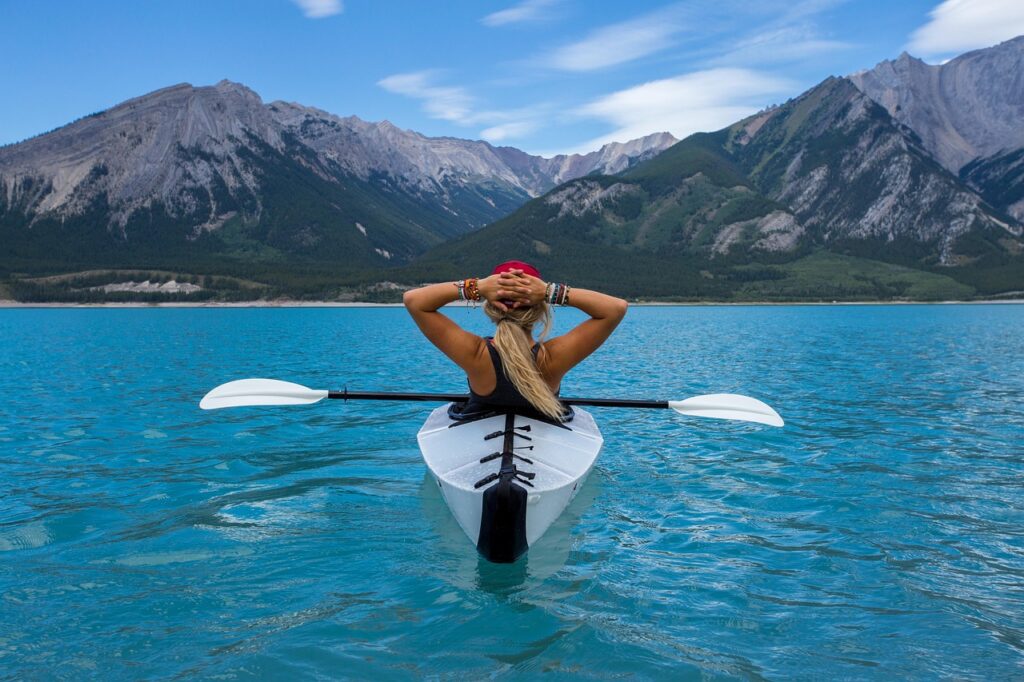
Hello everyone! I’m going to take you virtually to two of the most beautiful kayaking locations on the planet, so get ready for some serious wanderlust. I can genuinely state that the Dalmatian Riviera in Croatia and Kauai’s Na Pali Coast are in a class by themselves, as someone who thrives on the excitement of gliding across pristine waters and discovering undiscovered coastal treasures.
I had been looking at those breathtaking pictures of the Adriatic Sea’s innumerable sun-kissed islands and the majestic emerald cliffs of Na Pali meeting the turquoise Pacific for years. They resembled something from a dream. I finally made those dreams come true last year when I went on two amazing kayaking trips that have left me speechless.
I can assure you that the actual scene was even more breathtaking than the photographs. The Na Pali Coast’s immense size is intimidating. Imagine paddling at the foot of 4,000-foot cliffs, with secluded golden sand beaches popping up around every corner and sea caves luring you into their enigmatic depths. It was a different kind of magic in Croatia. Imagine swimming in secret caves with water so clear you feel like you’re floating on air as you make your way through a maze of lush islands, each with its own distinct charm.
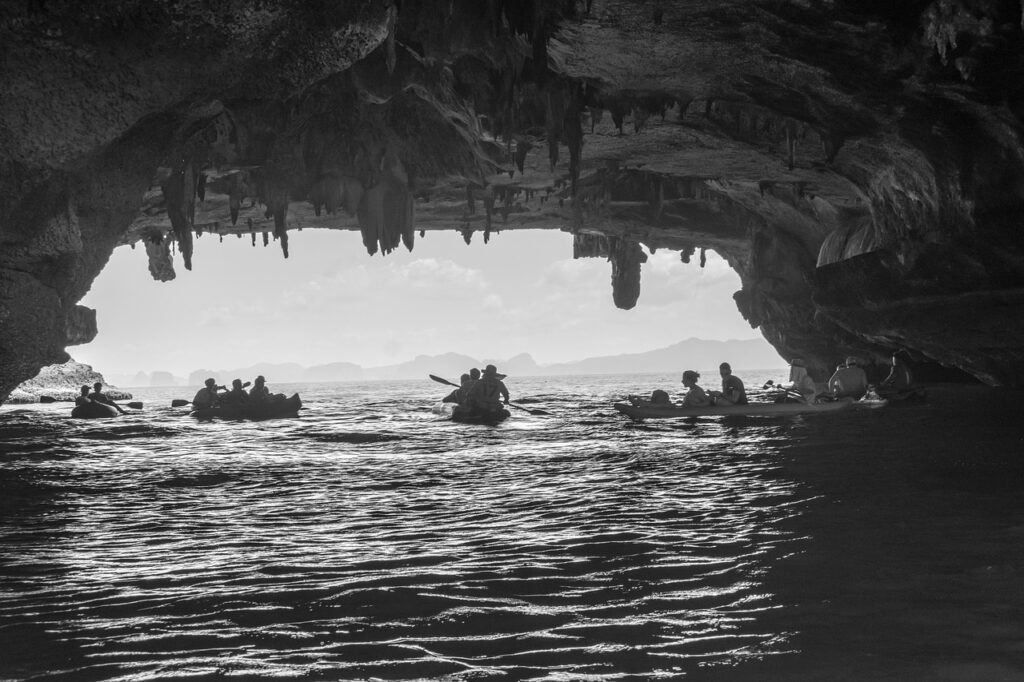
These were immersive experiences that allowed me to connect with nature in all of its most beautiful and unadulterated forms; they were more than just vacations. And I want to tell you about that. Let’s get started on these incredible kayaking adventures, so grab a cup of coffee (or perhaps a glass of something stronger—you’ll see why!).
Kauai’s Majestic Na Pali Coast
The coast of Na Pali. The name alone evokes visions of wild beauty and dramatic landscapes. There is an instant sense of adventure because this 17-mile section of Kauai’s northwest shore is inaccessible by car. Boat, helicopter, and, of course, kayaking are the main ways to take in its grandeur.
I chose to go on the kayaking adventure because I wanted to experience the force of the ocean beneath me, get a close-up look at the sheer cliffs, and have the flexibility to go at my own speed. I decided on a multi-day guided tour with a trustworthy local outfitter. They put safety first and had knowledgeable guides who knew the coastline like the back of their hands, according to my research (and countless positive reviews). A three-day, two-night guided kayaking trip along the Na Pali Coast usually costs between $600 and $1000 per person, which includes meals, camping permits, and equipment.
Ke’e Beach, the westernmost point reachable by road, was where I started my journey on a bright morning. The anticipation was evident, and the air was heavy with the aroma of tropical flowers. About ten kayaking enthusiasts of various ages and skill levels made up our group. We received a comprehensive safety briefing and paddling instructions from our guides, two informed and amiable locals. Their advice on negotiating the waves and getting into sea caverns was really helpful, even though I had some prior kayaking experience.
The scenery opened up in front of us in a succession of stunning vistas as we paddled west. The cliffs rose sharply from the sea, sculpted by centuries of wind and waves and created by volcanic activity. The deep blue of the Pacific stood in stark contrast to the vivid green of the tropical vegetation that clung to their steep slopes. Ethereal veils of mist were formed by waterfalls that tumbled down the cliff faces.
Paddling into the sea caves was one of the highlights. Some were tiny, resonant spaces that enhanced the sound of the waves hitting the rocks. Others were bigger, enabling our kayaks to glide into their shady, cool interiors, which revealed secret beaches and unusual rock formations. While pointing out ancient Hawaiian sites hidden away in the valleys, the guides told engaging tales about the history and legends of this coastline.
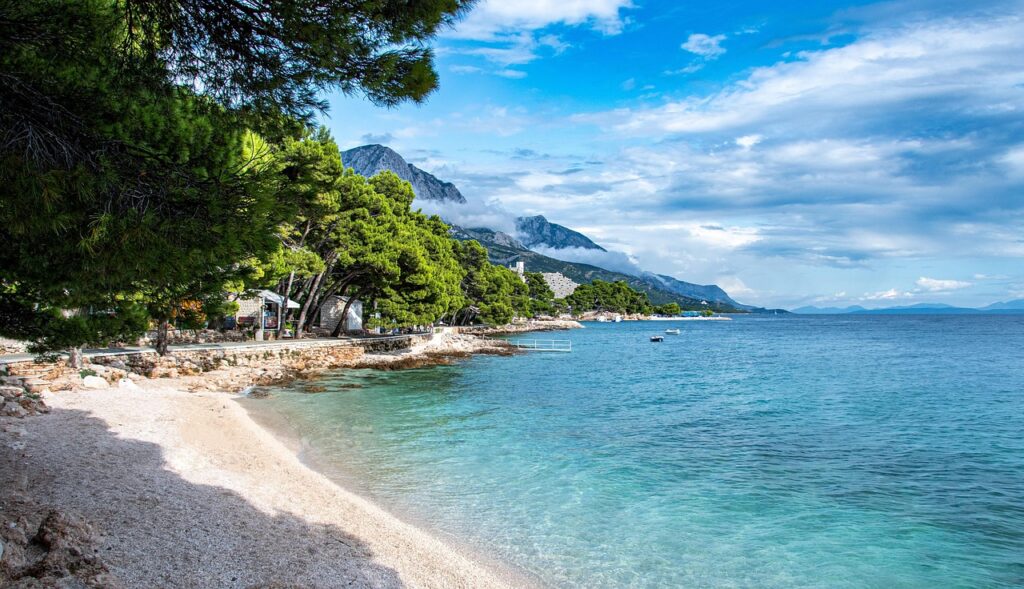
We made a stop at remote beaches that were only reachable by boat, where we camped for the night. I will never forget the experience of falling asleep to the sound of the waves and waking up to the cliffs painted in shades of pink and orange by the sunrise. Another amazing aspect of the trip was snorkeling in the pristine waters, where you could see a few sea turtles and be surrounded by vibrant fish.
About 1.5 million tourists participated in water sports activities on Kauai in 2024, with kayaking tours along the Na Pali Coast being among the most well-liked, according to recent data from the Hawaii Tourism Authority. This emphasizes how important the region is as a top kayaking destination.
Although paddling for several hours every day was physically taxing, the breathtaking scenery around us made it seem almost effortless. Our group’s camaraderie and the sense of accomplishment we got from finishing each day’s journey combined to create a very unique atmosphere.
Long after you have left the Na Pali Coast, you will still remember the experience. It is a must-do for any kayaking enthusiast because of its unadulterated, wild beauty, physical challenge, and sense of connection to nature.
Croatia’s Enchanting Dalmatian Riviera
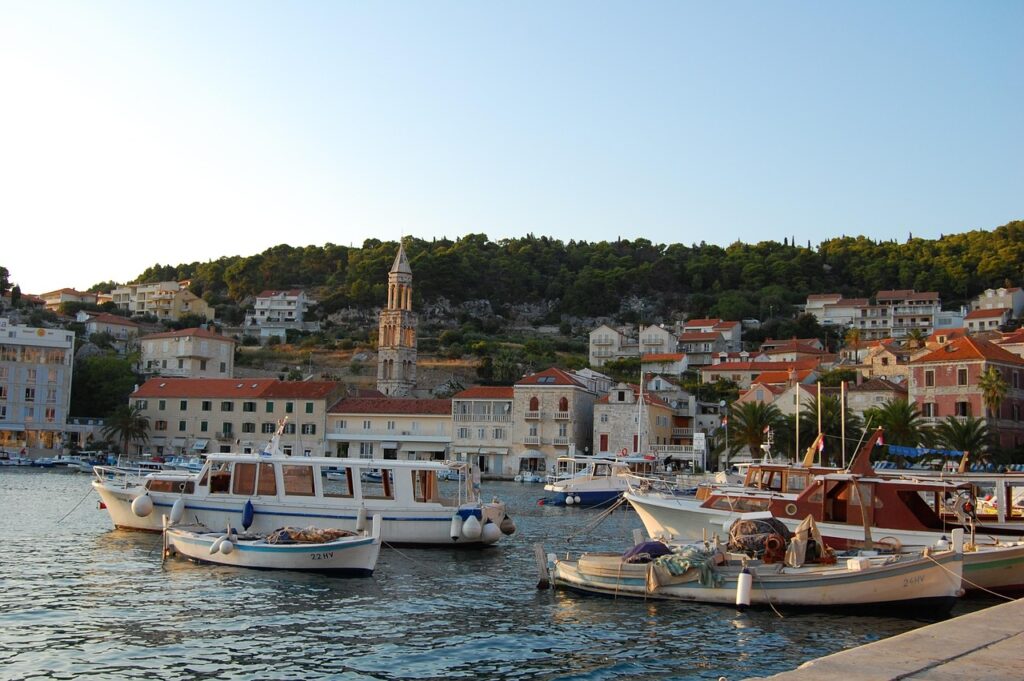
Following Kauai’s untamed splendor, Croatia’s Dalmatian Riviera provided an alternative but no less alluring kayaking destination. Imagine a coastline that is encircled by the captivating turquoise waters of the Adriatic Sea and is dotted with more than a thousand islands, each with its own distinct personality. Some of the islands are lush and green, while others are rocky and desolate. I was excited to explore this playground.
In Croatia, I took a slightly different approach to kayaking. I chose a more adaptable strategy, making multiple day trips and shorter overnight excursions from various coastal towns, rather than taking a lengthy, multi-day guided tour in a single location. I was able to experience the varied splendor of different islands and areas along the Dalmatian coast as a result.
My Croatian kayaking journey began in the Split archipelago, where I paddled around the islands of Vis, Brač, and Hvar. I can easily base myself in a town like Split or Hvar Town and then go on day trips with local kayaking operators because ferries are easily accessible between the mainland and the larger islands. In this area, a full-day kayaking tour typically costs between $70 and $120 per person, including gear and a guide.
Here, kayaking was more about finding secret coves, remote beaches, and quaint coastal towns that could only be reached by boat than it was about negotiating sheer cliffs. It was ideal for swimming and snorkeling because the water was so clear. The aroma of Mediterranean herbs filled the air as I paddled for hours along the shores of islands covered in pine.
The Pakleni Islands, a stunning archipelago off the coast of Hvar, were the subject of one of the most memorable days spent kayaking. This group of tiny, largely deserted islands is a maze of secluded coves, rocky beaches, and glistening lagoons. We had a great picnic lunch on a deserted beach, paddled through winding channels, and paused for cool swims in remote coves. Only a short boat ride from the busy town of Hvar, these islands were remarkably peaceful.
Exploring Brač’s coastline, which is well-known for its breathtaking Zlatni Rat beach (the Golden Horn), was another highlight. Although the beach is easily reachable by land, kayaking along the island’s southern coast provided a unique viewpoint, revealing secret coves and striking rock formations.
I had the chance to go kayaking around the Elaphite Islands, further south, close to Dubrovnik. Compared to the Split region, this small archipelago, which consists of a number of inhabited and uninhabited islands, provides a more relaxed and uncrowded kayaking experience. We found remote swimming areas, historic ruins, and quaint fishing villages while paddling between the islands.
Over 2 million visitors engaged in nautical tourism activities, such as kayaking and small boat excursions, along the Croatian coast in 2024, according to data from the Croatian National Tourist Board. In recent years, adventure tourism—which includes kayaking—has grown steadily in popularity, and many small local businesses now provide equipment rentals and guided tours.
The accessibility and diversity of experiences offered by kayaking in Croatia really stood out to me. There is something for everyone, whether you’re a novice seeking a relaxed paddle in serene waters or an experienced kayaker hoping to venture farther. It’s a great choice for independent travelers because it’s simple to rent equipment and sign up for guided tours.
Renting a kayak for a day usually costs between $30 and $50, making it a reasonably priced way to see the coast at your own speed. Numerous rental stores and tour companies serving a range of interests and skill levels can be found in many coastal towns.
Although they were different in their own ways, the Dalmatian Riviera and the Na Pali Coast both provided unmatched kayaking experiences. Whereas Croatia was about discovering a rich tapestry of islands, history, and pristine waters, Kauai was about unbridled power and dramatic scale.
I strongly advise including both of these locations on your list if you want to have an amazing kayaking experience. They provide a special fusion of adventure, cultural immersion, and scenic beauty. You are sure to have an unforgettable experience long after you have put your paddle away, whether you decide on the breathtaking cliffs of Kauai or the island-dotted paradise of Croatia.
What are you waiting for, then? Get your own kayaking adventure planned! One paddle stroke at a time, the world awaits exploration.
Essential Tips for Your Kayaking Adventures
After sharing my amazing kayaking experiences along the Dalmatian Riviera and the Na Pali Coast, I wanted to offer some helpful guidance to anyone organizing an adventure of a similar nature. A little planning can go a long way toward guaranteeing a safe and enjoyable trip, regardless of your level of experience.
Planning and Booking:
Investigate Outfitters: Pick trustworthy companies for kayaking tours or rentals. Make sure they offer well-maintained equipment, look for reviews, and review their safety records. Ask about the experience and local knowledge of the guides for multi-day excursions such as the Na Pali Coast.
Kayaking tours and rentals tend to fill up quickly, particularly during the busiest time of year (summer in both places). It’s wise to reserve your spot well in advance.
Think About Your Skill Level: Be truthful about your level of kayaking proficiency. Select routes or tours based on your experience. Options for varying skill levels are provided by numerous operators.
Examine the Weather: Prior to leaving, always check the weather forecast. Keep an eye out for any changes in the wind, waves, or currents. The most recent information is typically found in local guides.
Regulations and Permits: Permits are necessary for some locations, such as camping along the Na Pali Coast. Make sure your tour operator takes care of these, or if you’re traveling alone, find out about and secure the required permits.
Things to Bring:
Wear layers that dry quickly. It’s imperative to have a lightweight waterproof jacket and a rashguard or t-shirt for sun protection. Think about packing a hat and UV-blocking sunglasses.
Footwear: Wet-resistant sandals or water shoes work best. Steer clear of flip-flops that are prone to slipping off.
Sun Protection: Even on overcast days, a high SPF sunscreen is essential. SPF-containing lip balm is also advised.
Hydration: Pack a lot of water. Think about using reusable water bottles or a hydration pack for longer journeys. Water refills are offered on certain tours.
Snacks: To keep you going in between meals, pack non-perishable snacks like energy bars or dried fruit.
Waterproof Bag: To keep your valuables, extra clothes, and electronics (phone, camera) safe, you need a dry bag.
First-Aid Kit: It’s a good idea to keep a small personal first-aid kit stocked with necessities like bandages, antiseptic wipes, and painkillers. On a guided tour, your guide will probably have a more complete kit.
Navigation (if independent): Bring a waterproof map and a GPS or compass if you’re kayaking alone. Learn the route by heart.
Camera (optional): Take into account getting a waterproof camera or a waterproof phone case if you want to record the breathtaking scenery.
Water Safety:
Pay close attention to your guide’s instructions and safety briefings if you’re on a guided tour.
Wear a Personal Flotation Device (PFD): When kayaking, make sure your PFD fits properly.
If you are an independent kayaker, it is always safer to paddle with a buddy.
Be Aware of Your Environment: Keep an eye out for obstacles in the water, boat traffic, and currents.
Recognize Your Limits: Avoid exerting yourself past your physical limits. Take a break if you’re feeling worn out.
Learn the Fundamentals of Self-Rescue: Learn how to right a capsized kayak and other fundamental kayaking self-rescue techniques. This will probably be covered in your guide.
Respect Marine Life: Keep a safe distance from marine life and avoid touching or feeding it.
You can improve your kayaking experience in these amazing locations and guarantee a fun and safe journey by keeping these pointers in mind.
The Broader Appeal of Kayaking and Sustainable Tourism
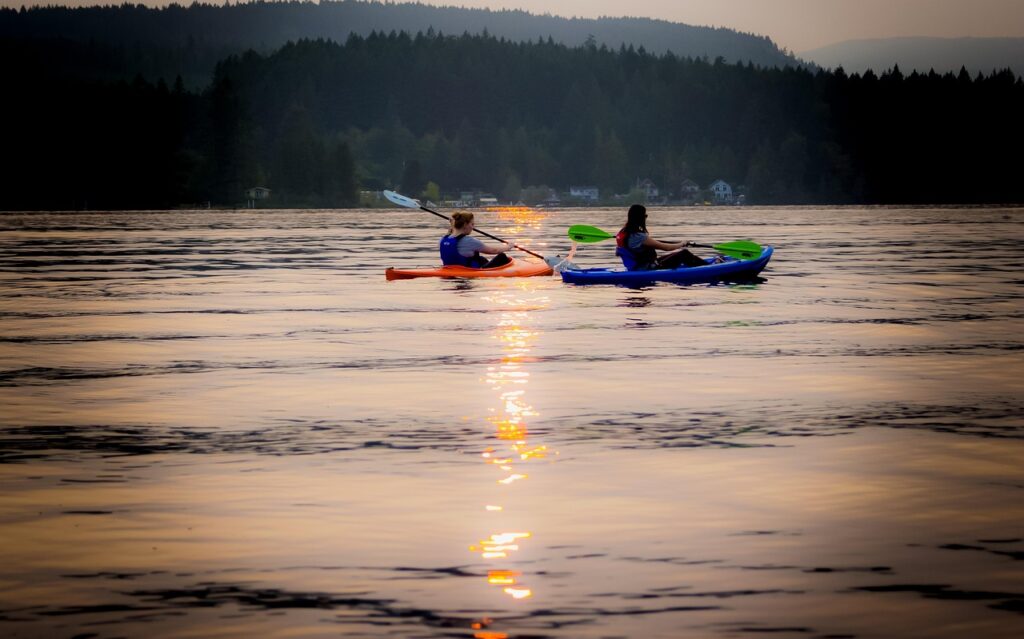
In addition to being personal adventures, my kayaking trips along the Dalmatian Riviera and the Na Pali Coast demonstrated the growing popularity of kayaking as a means of connecting with nature worldwide and the value of sustainable tourism practices in protecting these priceless ecosystems.
The Development of Kayaking
Globally, kayaking has seen a sharp increase in popularity. The global kayaking market was estimated to be worth $2.5 billion in 2023 and is expected to grow at an annual rate of about 3.5% to reach over $3.2 billion by 2030, according to recent market analysis reports. A number of factors are driving this growth:
Accessibility: People of all ages and fitness levels can enjoy kayaking. To accommodate everyone, a variety of kayaks and tours are available.
Relationship with Nature: Kayaking provides a special and personal way to see lakes, rivers, coastlines, and natural landscapes.
Adventure and Exploration: It offers the chance to discover undiscovered coves, isolated beaches, and otherwise unreachable places.
Health Benefits: Kayaking is an excellent way to improve cardiovascular health, strength, and endurance in the upper body.
Mental Well-Being: The peace and quiet of being on the water and in nature can significantly improve stress management and mental health.
More people are participating in kayaking as a leisure activity and as a component of their travels as a result of growing awareness of these advantages.
Eco-Friendly Travel and Kayaking:
The significance of sustainable tourism practices is growing along with the popularity of kayaking in environmentally delicate regions such as the Dalmatian Riviera and the Na Pali Coast. This entails optimizing the positive effects of tourism while reducing its detrimental effects on the environment and nearby communities.
Key elements of sustainable kayaking include the following:
Choosing Eco-Conscious Operators: Picking tour companies that are dedicated to sustainable methods, like reducing waste, protecting wildlife, and helping out the community.
Keeping a safe distance from marine life, staying away from nesting areas, and leaving no trace behind are all ways to respect wildlife and habitats.
Reducing waste involves properly disposing of waste, packing out all trash, and avoiding single-use plastics.
Supporting Local Economies: To make sure that tourism helps the community, choose local tour operators, eateries, and lodging.
Education and Awareness: Raising kayakers’ awareness of the environment and promoting ethical conduct.
Sustainable practices are becoming more and more popular among kayaking operators in Kauai and Croatia. Some businesses, for instance, support local conservation initiatives, use environmentally friendly cleaning supplies, and instruct their customers about kayaking responsibly.
It is our duty as tourists to select environmentally friendly options and to consider how our actions affect the locations we visit. We can ensure that these amazing natural settings are protected for the enjoyment of future generations by endorsing environmentally conscious kayaking tours and practicing responsible behavior ourselves.
The beauty and fragility of our planet, as well as the significance of traveling in a way that respects and protects it, were all brought home to me by my kayaking adventures. Kayaking’s gentle glide can be a potent means of fostering a connection with nature, and by doing so responsibly, we can all help ensure that tourism has a more sustainable future.
Follow me on Facebook: https://www.facebook.com/profile.php?id=61574792461434



